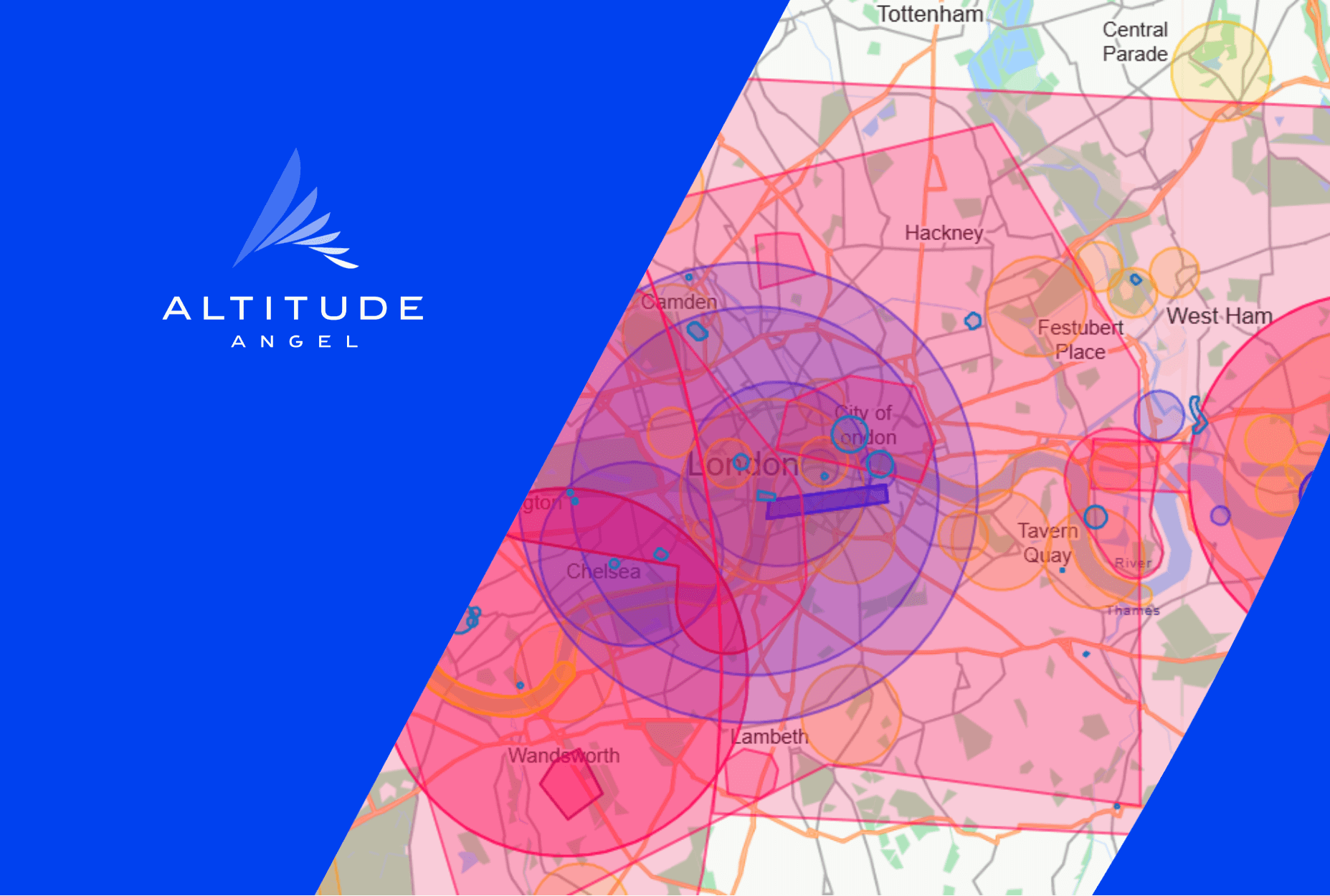Alien to airspace
 Airspace view of NHS trials in central London
Airspace view of NHS trials in central London
Stephen Farmer, our Head of Communications, recently shared a blog post on LinkedIn addressing the often overlooked importance of the need to manage airspace if the industry is to scale. Read his blog here:
They say in space no one can hear you scream. Well, in a Temporary Reserved Area no one can see you. Can they?!
Recently LinkedIn was ablaze with people posting about the Apian/Wing NHS trials taking place between Guys and St Thomas’ hospitals in central London. News of the trial was also covered in The Times.
And rightly so. It’s a great trial and it will benefit the wider industry, boosting the profile of drones and the good they can do when utilised by a much-loved institution like the NHS.
And, amongst all the Apian/Wing posts was one unveiling a new report prepared by the PwC Drone Powered Solutions – Global Centre of Excellence in Drone and Satellite Technology team titled Drone Deliveries: Taking Retail and Logistics to New Heights which lead with the finding According to calculations, 14,000 daily deliveries are expected to result in 5 million business-to-consumer (B2C) drone deliveries worldwide in 2024. This number is projected to soar to an impressive 808 million within ten years.
This is all brilliant stuff. Positive coverage across traditional and new media. Fantastic.
But there’s something missing. Something massive. There’s no talk of the airspace.
In the PwC report, across 42 pages the word ‘airspace’ is mentioned just six times, almost in passing, and never as a key component in drone operations. And what is overlooked in the Apian/Wing trial is the flights are taking place with a TRA (Temporary Reserved Area), meaning ‘…[it is] temporarily reserved and allocated for the specific use of a particular user during a determined period of time and through which other traffic may or may not be allowed to transit in accordance with the air traffic management arrangements notified for that volume of airspace.’ In other words, other aircraft can’t just wander in to it, they need permission [in image #1, the dark blue rectangle]. Furthermore, the TRA falls under the London/City CTR (Control Zone) which further precludes general aviation. Simply put, in this instance, there’s nothing else in the sky, bar a few birds, where this trial is taking place.
If you wanted to scale this trial, say extend the flight range from St Thomas to Hammersmith Hospital, maybe an additional distance of 3km, easy for a drone, it would be near impossible using a TRA in London’s airspace. Not only would the drone need to cross the river, Heli-Route H4, it would need to fly through the London Heliport FRZ. I seriously doubt the CAA would approve an airspace change with so many other established airspace users involved.

Airspace between Swindon and Oxford
If we were to replicate this trial between two hospitals I know to share lab facilities, The Great Western in Swindon and John Radcliffe Hospital in Oxford (image #2 approx. 43km apart as the crow flies), the drone would need to leave The Great Western – which is currently covered by a NOTAM warning of hot-air balloons, skirt around the Sandhill Farm glider site before entering an Area of Increased Risk (military training flights), before either passing through, having gained permission, or flown around RAF Brize Norton’s CTR, ahead of arriving at John Radcliffe. The drone has been through multiple types of airspace and shared the sky with everything from hot air balloons, general aviation, gliders, and military jets.
You’re not going to get a TRA to enable that flight. “Sorry RAF Fighter Jet, but you can’t fly there, drone delivery taking place…”
Let me be clear, I’m not throwing shade on the Apian/Wing trial. What I am saying is if this industry is to scale, it cannot be done using any myriad of three letter acronyms currently used to segregate airspace. We need to manage airspace so all can use it, irrespective of what equipage their aircraft has, or hasn’t got.
So, our focus, as an industry, needs to sharpen. We need our regulator and our government to get serious about airspace and put in place the mechanisms, the platforms, the technology, which can enable flights like the one between Swindon and Oxford so they can happen without resorting to ‘alphabet soup’. This is the focus of Altitude Angel.
If you want to know more about how Altitude Angel can enable BVLOS drone operations email stephen@altitudeangel.com.
Listen to audio recording of the article:
Share this article:

Related News...
It's about the airspace, stupid!
Posted by Altitude Angel Insight
Altitude Angel On Air #7: The one where we talk about Project Skyway
Posted by Altitude Angel Insight
10 Years and an optimistic future
Posted by Altitude Angel Insight